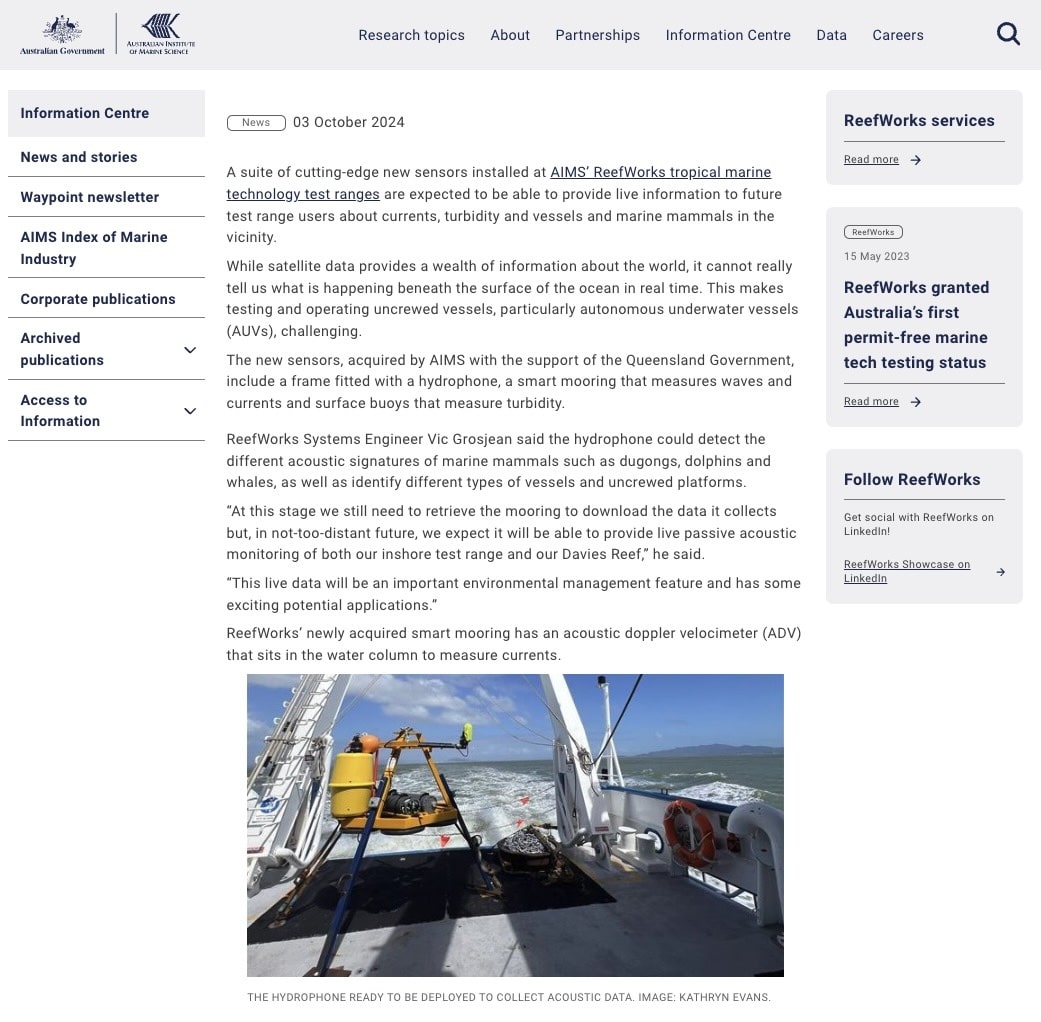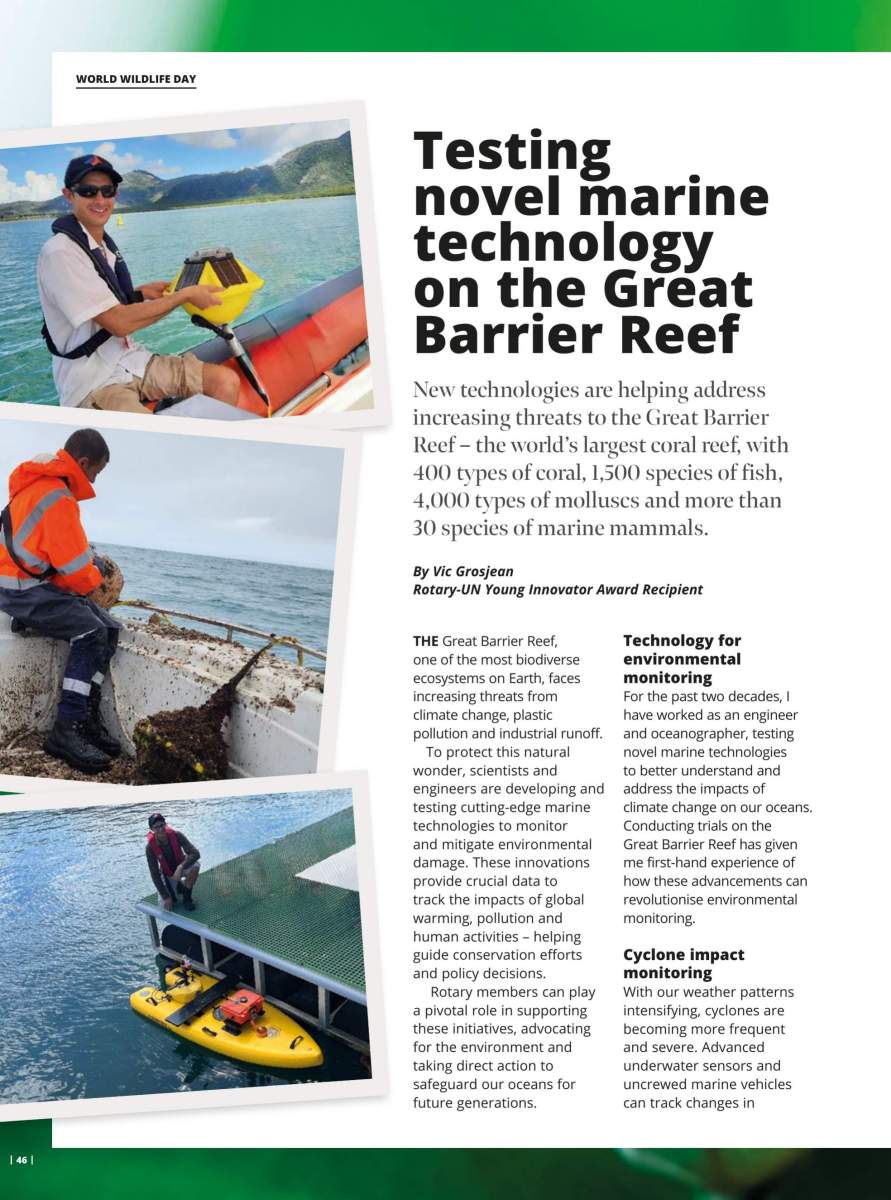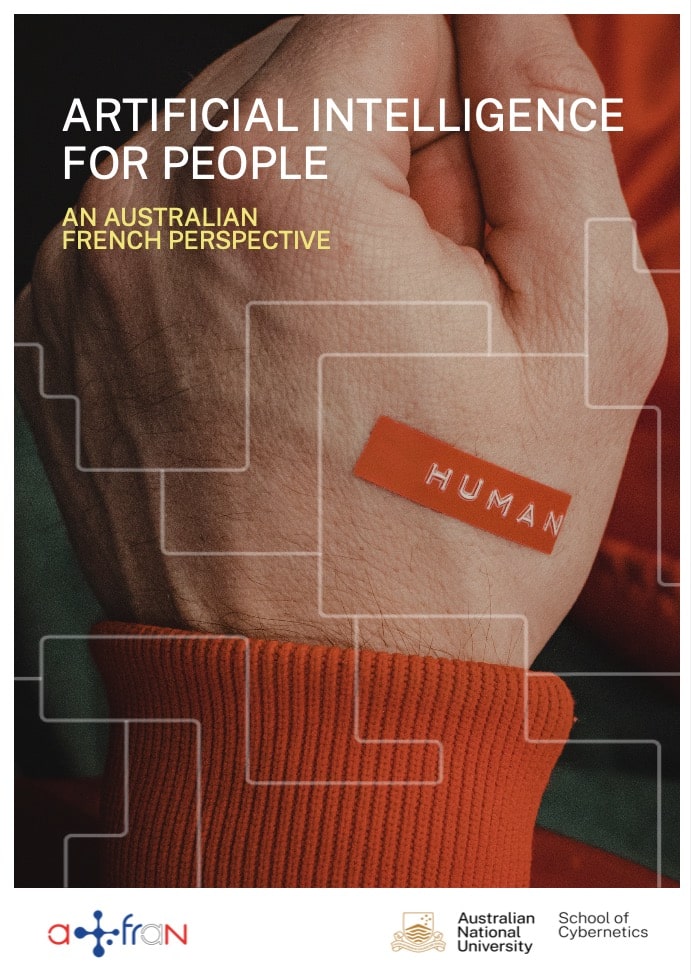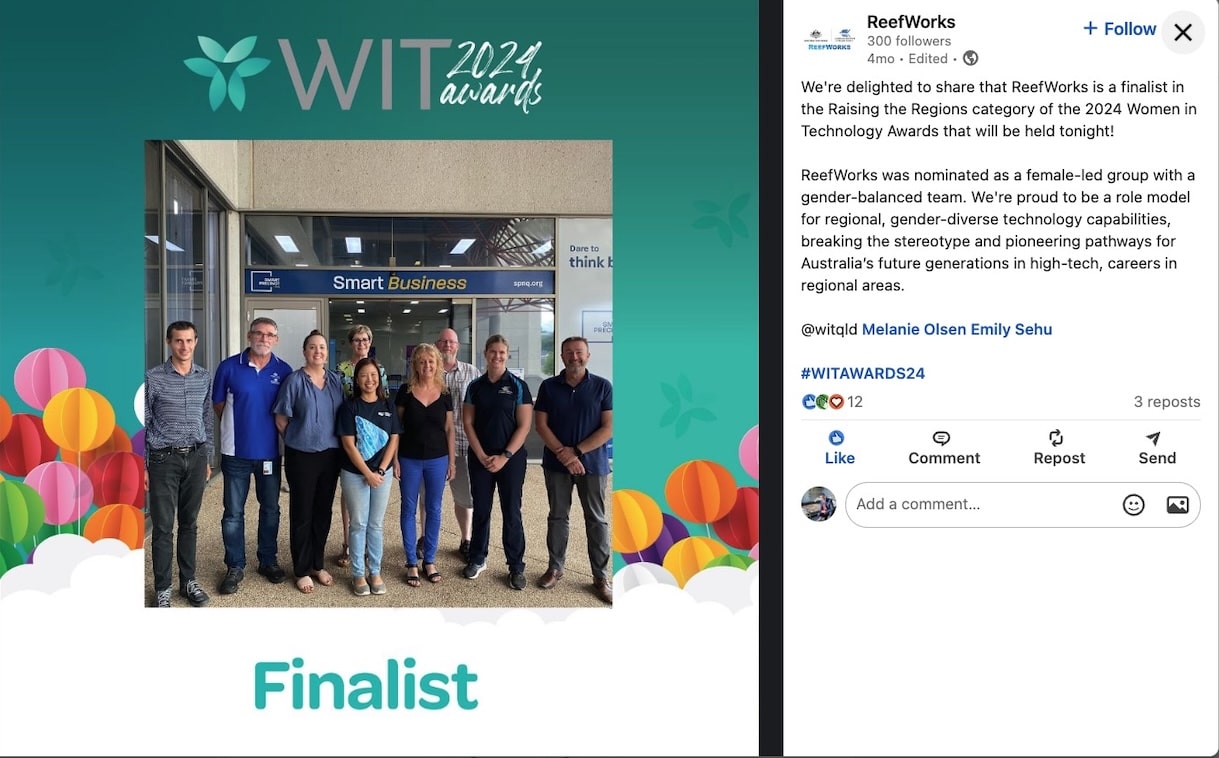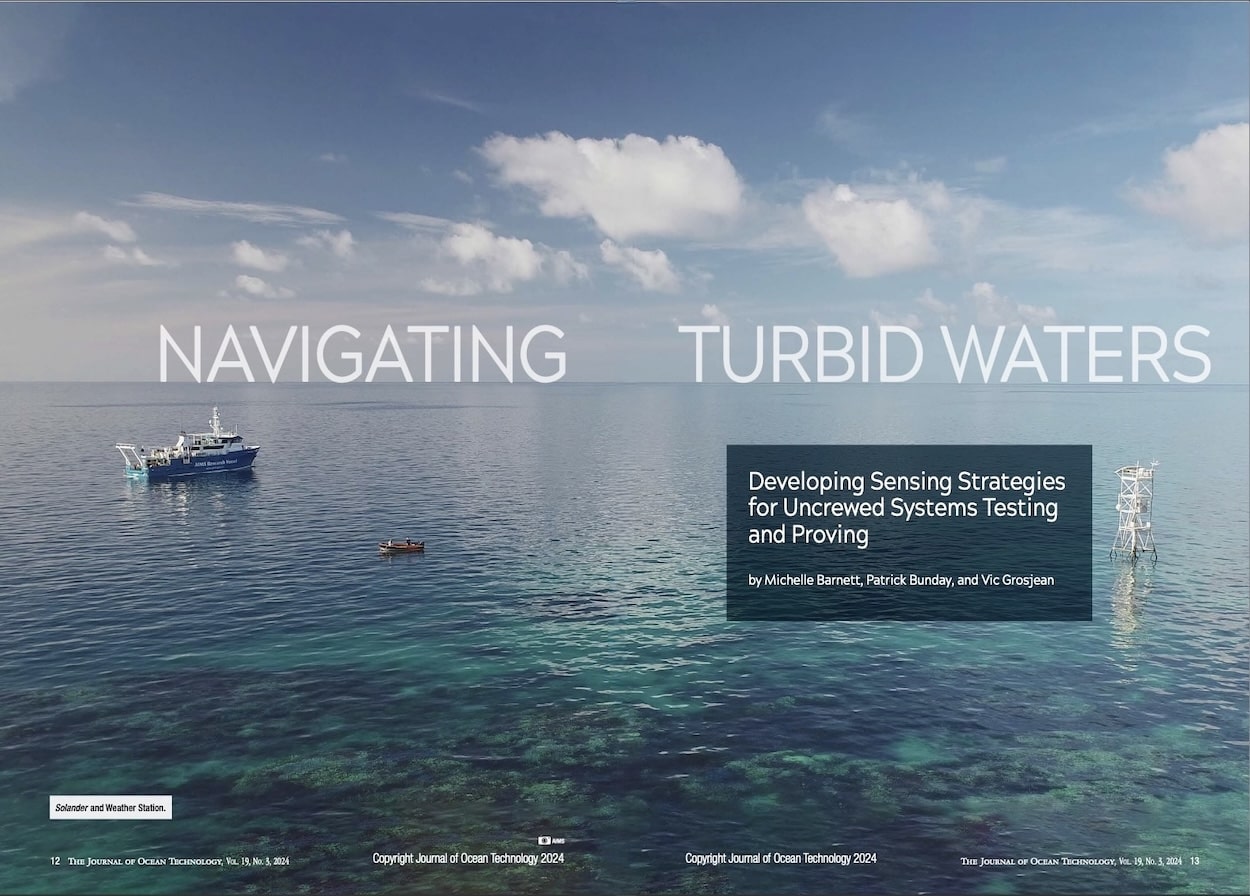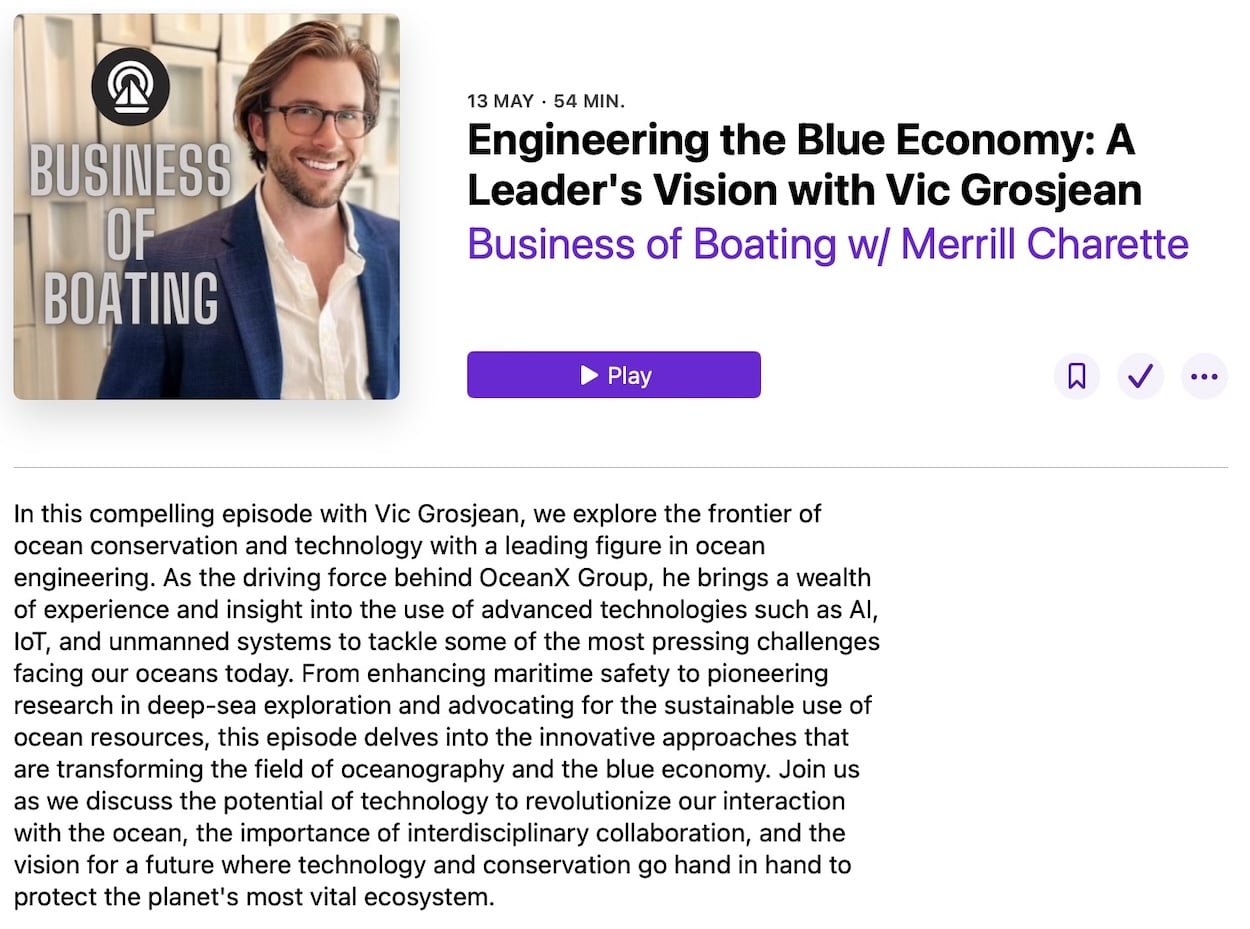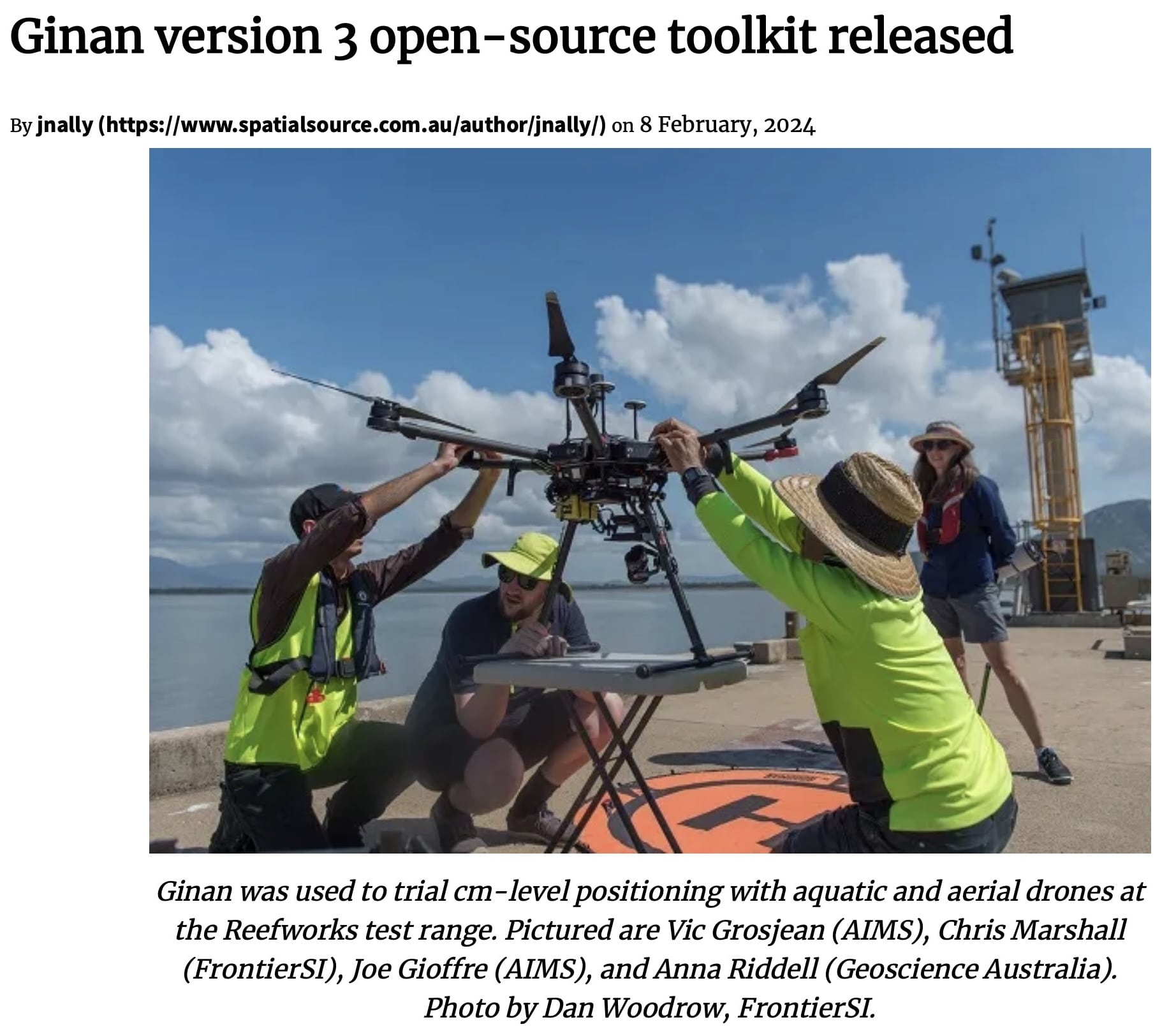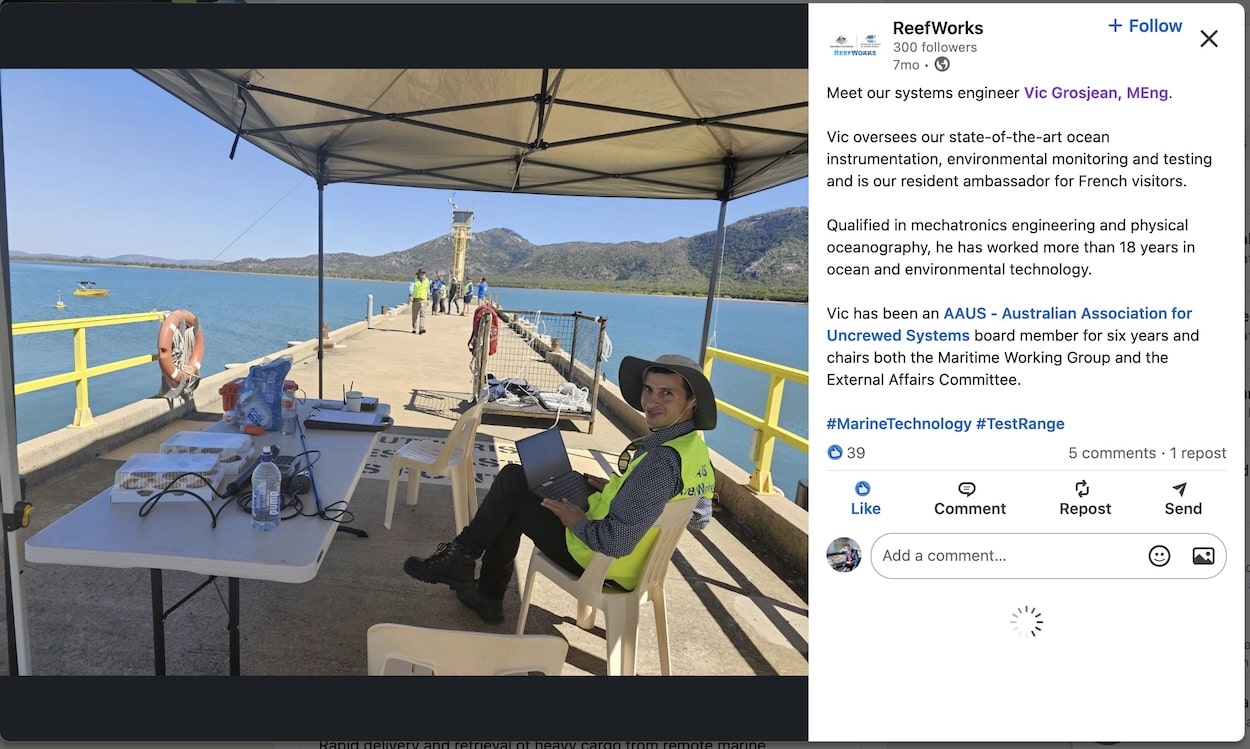| FOR IMMEDIATE RELEASE |
3, October 2024 – Deploying JASCO Hydrophone to Listen for Autonomous Underwater Vessels in Real Time.
Vic Grosjean Deploying JASCO Hydrophone to Listen for Underwater Vessels in Real Time.
AIMS’ ReefWorks tropical marine technology test range is now equipped with a suite of cutting-edge sensors, providing live environmental data to enhance the efficiency and safety of uncrewed underwater vessels. Among these, the JASCO hydrophone stands out as a game-changer, capable of real-time acoustic monitoring of marine mammals and autonomous underwater vessels (AUVs).
The Challenge of Underwater Monitoring
While satellite technology has revolutionized our understanding of ocean conditions, it remains ineffective for tracking real-time activities beneath the ocean surface. This poses a significant challenge for testing and operating uncrewed and autonomous underwater vessels, where precise navigation and situational awareness are critical.
Real-Time Passive Acoustic Monitoring with JASCO Hydrophone
Vic Grosjean, Systems Engineer at ReefWorks, has led the deployment of the JASCO hydrophone, a highly sensitive device capable of detecting and distinguishing acoustic signatures of marine mammals such as dugongs, dolphins, and whales. Additionally, the hydrophone can identify different types of vessels, including uncrewed platforms, providing valuable insights for both environmental monitoring and operational efficiency.
“At this stage, we still need to retrieve the mooring to download the data it collects,” said Grosjean. “But in the not-too-distant future, we expect it will be able to provide live passive acoustic monitoring of both our inshore test range and Davies Reef.”
The Role of Smart Moorings and Turbidity Sensors
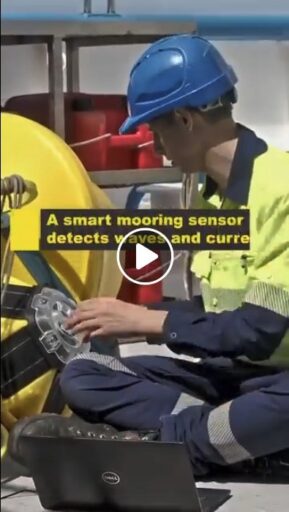
Complementing the hydrophone, AIMS has also deployed smart moorings equipped with Acoustic Doppler Velocimeters (ADV) to measure real-time ocean currents. These moorings are suspended in the water column, preventing them from being buried in sediment—a common issue for seabed-based sensors.
Understanding real-time ocean currents is crucial for launching small underwater vehicles and retrieving uncrewed systems that lose communication before they begin drifting. Moreover, the system includes buoys fitted with turbidity sensors to measure sediment levels and mitigate potential environmental impacts, such as those associated with wharf construction.
Advancing Environmental Management and Marine Technology
The deployment of these advanced sensors, made possible with the support of the Queensland Government, represents a significant step in enhancing environmental monitoring and operational capabilities at AIMS. With the integration of real-time data, ReefWorks is poised to provide unprecedented insights into underwater acoustics, marine traffic, and environmental conditions.
Read more:
For more information on this groundbreaking project, visit AIMS News.
